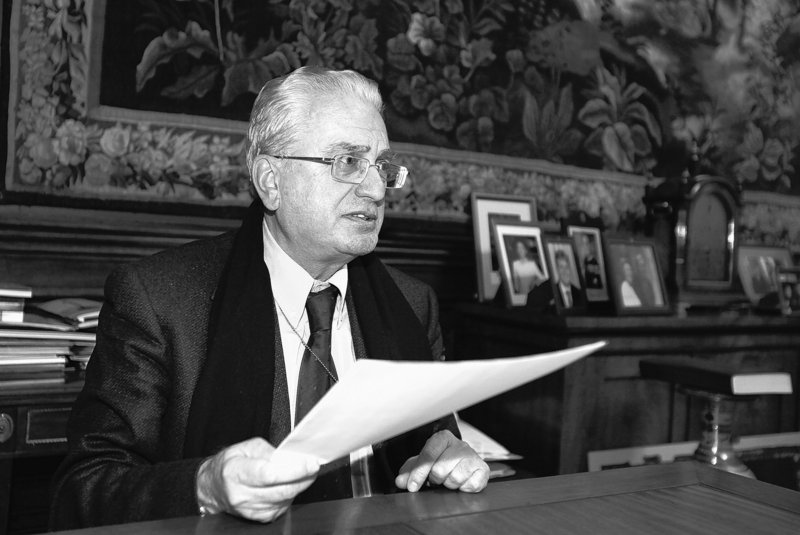ST. PETERSBURG, Russia — She was an unlikely bandit, one of hundreds of middle-aged, down-at-the-heel curators who shuffle through the former czarist palaces of the State Hermitage Museum.
But quietly, steadily, Larisa Zavadskaya was brewing a scandal that would shake the art world from New York to Paris. She stuffed her purse with hundreds of pieces of jewelry, icons and silverware, later farming them out to antiques dealers.
The thefts came to light in 2005 when inspectors arrived to inventory her department. Zavadskaya dropped dead of a heart attack on the spot.
Meanwhile, doubt swept the country’s cultural elite. If Zavadskaya had stolen hundreds of pieces without being detected, what else had been stolen, in the Hermitage or elsewhere?
Nobody denies the confusion lingering in museums across Russia after a long history of painful political change, bureaucratic bungling and bad bookkeeping. But nobody can say for sure how much damage has been done.
Since the Zavadskaya thefts, Russian officials have struggled to take stock of the country’s cultural heritage. A massive national audit, the first of its kind undertaken by post-Soviet Russia, was ordered by an enraged and embarrassed then-President Vladimir Putin.
Thousands of officials from all nooks of Russia’s considerable state bureaucracy fanned out to check the warehouses, basements and display cases of more than 1,000 museums across the country.
As it turns out, there is plenty missing. The audit’s findings are due for release any day, but Russia’s cultural officials have already acknowledged that at least 87,000 pieces have vanished. Hundreds of those belonged to the Hermitage.
The Russian government is eager to downplay the findings. Many of the missing items were of minor interest, officials insist.
But in Russia, where skeptics are used to brushing aside the assurances of the government, some observers worry that the report reveals only part of the problem in the country’s museums. International art experts, meanwhile, are incredulous at the auditing project’s speed.
“As an exercise, it strikes me as fantastic,” said Jon Whiteley, a Russian art expert at the Ashmolean Museum at Oxford University. “But to make it complete, I would have thought, would be nearly impossible.”
That trail of doubt stretches here, to the city invented by Peter the Great in his eagerness to open Russia to the West – and to the hallowed, art-lined halls of the Hermitage.
With its 3 million pieces of art and artifacts stored in the cavernous palaces of a bygone empire, the Hermitage has been the heart of Russian art ever since Catherine the Great bought troves of European paintings and sculpture, creating the core that would swell into today’s collection.
This inherited splendor carries a heavy symbolic weight in today’s Russia. Unlike many other institutions, the Hermitage has survived the blood and turmoil of revolution and collapse. Today it is acknowledged to be as good – possibly better – than any similar institution in the West. The Louvre is widely considered the world’s only comparable collection, and few art lovers dare to pick sides.
For decades, the Hermitage staff operated on the honor system. Only with the revelation of the Zavadskaya thefts did the museum install a complete web of security cameras and metal detectors. The director is still grumbling.
Mikhail Piotrovsky is Hermitage royalty and a longtime political ally of St. Petersburg native Putin. His father presided over the collection for 26 years until his death in 1990; Piotrovsky ascended to the job in 1992.
Today he calls the museum a “police state.”
The security of Russian art, however, has been questioned for decades.
In the years after the Bolsheviks overran the Winter Palace during the revolution that toppled the czar, the collections were ravaged by looting – and later depleted by Soviet rulers who plucked pieces at whim and passed them out as gifts.
And as chaotic attempts at democracy in the 1990s gave way to the more autocratic Russia overseen by Putin, fresh doubts were stirred about the Hermitage – and quickly squelched.
Yuri Boldyrev, a prominent politician who helped found the opposition Yabloko party, was deputy head of the government’s national audit chamber in the late 1990s. He spent years investigating the Hermitage.
A report he completed in 2001 was a scathing condemnation: It alleged that more than 220,000 pieces had fallen off the books.
Investigators asked to see 50 pieces – the museum could only come up with three. Insurance paperwork and proofs of authenticity were missing. Cleaning had been double-billed and charged to a shell company.
Boldyrev’s controversial conclusion was that the museum was being run with enough deliberate ambiguity to allow corruption, and even theft, to take place without leaving a trace.
His report was greeted with fury by the Hermitage. While acknowledging mistakes in paperwork and accounting, the museum vigorously denied allegations of missing artwork and corruption.
Today, Russian officials dismiss the report as biased. It has disappeared from the audit chamber’s Web site. Boldyrev left government in 2001.
“We see the same old people in the same old positions,” Boldyrev said. “Or even higher.”
Send questions/comments to the editors.



Success. Please wait for the page to reload. If the page does not reload within 5 seconds, please refresh the page.
Enter your email and password to access comments.
Hi, to comment on stories you must . This profile is in addition to your subscription and website login.
Already have a commenting profile? .
Invalid username/password.
Please check your email to confirm and complete your registration.
Only subscribers are eligible to post comments. Please subscribe or login first for digital access. Here’s why.
Use the form below to reset your password. When you've submitted your account email, we will send an email with a reset code.